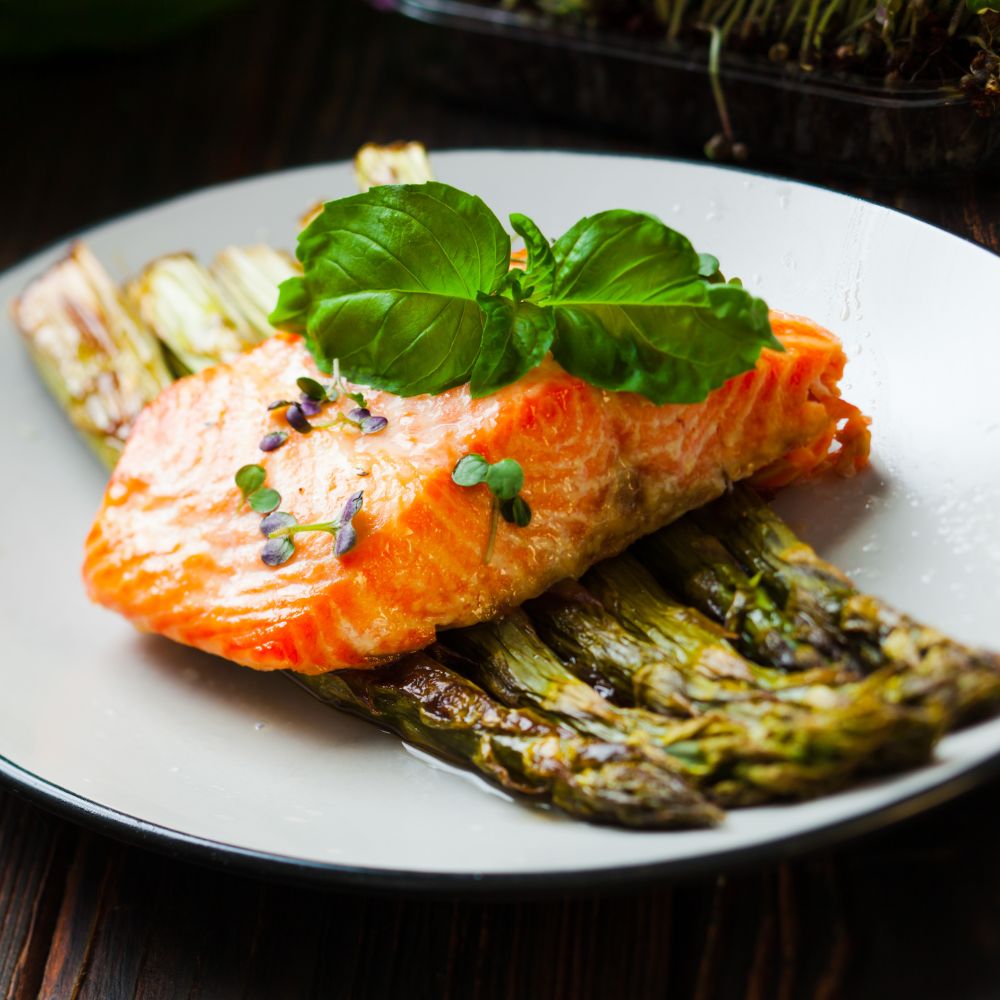When it comes to building muscle, nutrition plays a vital role, and fish is often celebrated as an exceptional source of protein. Whether you’re an athlete or someone looking to improve your fitness, incorporating fish into your diet can significantly support your muscle-building goals. In this article, we’ll explore the best types of fish for muscle building, ranked from best to least favorable based on their protein content, fat composition, nutrient density, and overall health benefits. We’ll also discuss their macro profiles, whether you can eat them every day, how to prepare them, and which vegetables pair well for a balanced meal.
Ranking Fish for Muscle Building
The ranking of fish is based on several key criteria:
- Protein Content: Higher protein levels are essential for muscle growth and repair.
- Fat Composition: Healthy fats, particularly omega-3 fatty acids, contribute to heart health and reduce inflammation.
- Nutrient Density: Fish that are rich in vitamins and minerals provide additional health benefits.
- Calories: Lower-calorie options are preferable for those looking to manage their weight while building muscle.
1. Salmon
Why It’s Great: Salmon tops the list for its high-quality protein and omega-3 fatty acids, crucial for muscle recovery and growth.
- Macros (per 3.5 oz/100 g):
- Calories: 206
- Protein: 22 g
- Fat: 13 g
- Carbohydrates: 0 g
2. Tuna
Why It’s Great: Tuna is low in fat and high in protein, making it an ideal choice for muscle building. Canned tuna is especially convenient for quick meals.
- Macros (per 3.5 oz/100 g):
- Calories: 132
- Protein: 28 g
- Fat: 1 g
- Carbohydrates: 0 g
3. Mackerel
Why It’s Great: Mackerel is rich in protein and omega-3 fatty acids. It’s higher in calories, making it suitable for those looking to gain muscle mass.
- Macros (per 3.5 oz/100 g):
- Calories: 305
- Protein: 20 g
- Fat: 25 g
- Carbohydrates: 0 g
4. Shrimp
Why It’s Great: Shrimp offers an excellent protein-to-calorie ratio and is rich in vitamins and minerals, including selenium and vitamin B12, which support muscle function.
- Macros (per 3.5 oz/100 g):
- Calories: 99
- Protein: 24 g
- Fat: 0.3 g
- Carbohydrates: 0.2 g
5. Sardines
Why It’s Great: Sardines are nutrient-dense, providing protein and healthy fats, along with vitamins and minerals that support overall health.
- Macros (per 3.5 oz/100 g):
- Calories: 208
- Protein: 25 g
- Fat: 11 g
- Carbohydrates: 0 g
6. Tilapia
Why It’s Great: Tilapia is a lean source of protein that’s low in calories and fat, making it a good choice for muscle building without excess calories.
- Macros (per 3.5 oz/100 g):
- Calories: 128
- Protein: 26 g
- Fat: 2.7 g
- Carbohydrates: 0 g
7. Cod
Why It’s Great: Cod is a lean source of protein with fewer calories than fattier fish, making it ideal for those looking to build muscle while managing fat intake.
- Macros (per 3.5 oz/100 g):
- Calories: 105
- Protein: 23 g
- Fat: 0.9 g
- Carbohydrates: 0 g
Can You Eat Fish Every Day?
Yes, you can eat fish every day, but it’s essential to vary the types of fish you consume to avoid exposure to toxins like mercury, which can be found in certain fish, especially larger species. The general recommendation is to include a mix of fish, such as salmon, tuna, sardines, and tilapia, while limiting the intake of high-mercury fish like shark and swordfish.
Health Benefits of Daily Fish Consumption:
- Protein: Supports muscle repair and growth.
- Omega-3 Fatty Acids: Promote heart health and reduce inflammation.
- Vitamins and Minerals: Vital for overall health and wellness.
How to Prepare Fish for Muscle Building
1. Grilling
Grilling fish enhances its flavor while keeping it healthy. Simply season with herbs, lemon juice, and a bit of olive oil before placing it on the grill.
2. Baking
Baking is an easy and healthy way to prepare fish. Wrap it in foil with vegetables and spices for a flavorful, nutritious meal.
3. Sautéing
Sautéing fish in a bit of olive oil or butter can give it a crispy exterior while keeping it tender inside. Add garlic and herbs for extra flavor.
4. Steaming
Steaming fish retains its moisture and nutrients. Pair it with your favorite seasonings or a light sauce for added flavor.
5. Canning
For convenience, canned fish like tuna or sardines can be added to salads, wraps, or pasta dishes without any cooking.
Which Vegetables Pair Well with Fish?
Incorporating vegetables into your fish dishes not only enhances flavor but also boosts the nutritional value. Here are some excellent vegetable pairings:
1. Spinach
Spinach complements fish beautifully, providing iron and vitamins. Sauté it with garlic and serve alongside grilled salmon or tuna.
2. Asparagus
Asparagus is a great side for fish, especially when roasted or grilled. It adds crunch and a unique flavor that pairs well with oily fish like mackerel.
3. Broccoli
Steamed or roasted broccoli offers fiber and essential nutrients. It works well with almost any fish, especially cod or tilapia.
4. Zucchini
It can be sauteed, grilled, or spiralized into noodles. It’s a versatile vegetable that pairs nicely with a variety of fish.
5. Bell Peppers
Roasted or grilled bell peppers add a sweet flavor and vibrant color. They complement fish dishes well, especially in a Mediterranean-style meal.
Conclusion
Incorporating fish into your diet is a smart choice for muscle building and overall health. With various preparation methods and vegetable pairings, you can enjoy delicious, nutritious meals that support your fitness goals. Whether you opt for salmon, tuna, shrimp, or sardines, making fish a regular part of your diet can provide numerous health benefits while helping you achieve your muscle-building objectives. Remember to vary your fish choices to maximize health benefits and minimize any potential risks.

